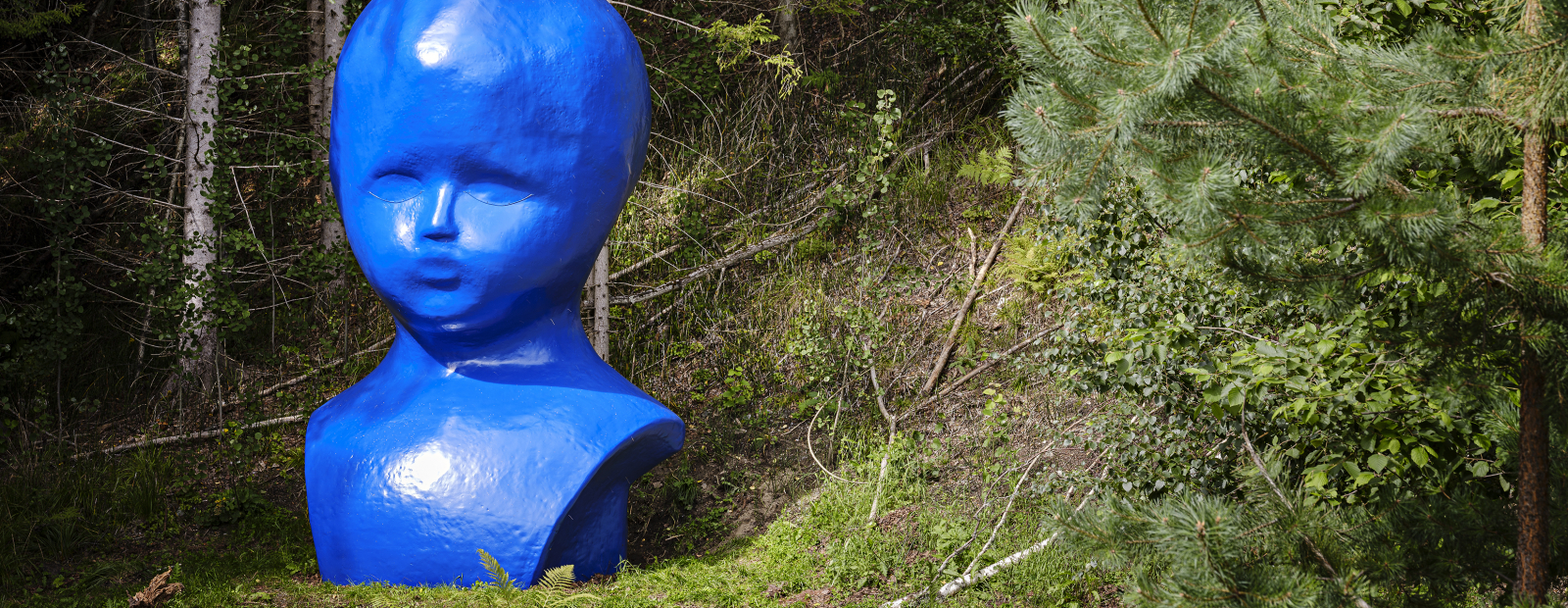Kistefos is one of the most interesting and attractive contemporary art destinations in the Nordic countries. The museum was founded in 1996 by investor and art collector Kristens Sveos as a tribute to the pulp mill that his grandfather had built on this site by the river Rannselva in 1889. Now the former industrial area houses the Industrial Museum, two art galleries and one of the most ambitious contemporary sculpture parks – 50 sculptures by Yajoi Kusama, Klaas Oldenburg, Olafur Eliasson, Anish Kapoor, Fernando Botero, Jeppe Hein, Tony Craig can be viewed in a picturesque setting. , Elmgreen & DragsetLawrence Wiener, Mangne Furuholmen, Mark Quinn, Ilya Kabakov, and Pierre Eeg.
Painted bronze sculpture by Marianne Heske Blue – a huge, bright blue doll’s head (scale 5 x 2.5 x 3 meters) – is the second work of the artist Kistefos in the sculpture park. Marianne Heske’s career spans more than forty years. She is one of the most prominent representatives of Norwegian conceptual art, which manifests itself in graphics, photography, screen printing, collage, installation and sculpture.
Marianne Heske is one of the most prominent representatives of Norwegian conceptual art. Photo – Bergen International Festival
The doll’s head is a motif that the author has been using in her art for several decades. In the early 1970s, when Marianne Heske was studying art in Paris, she saw a box at a flea market filled to the brim with the heads of small, finely crafted papier-mâché dolls produced in the 1920s. Once at the artist’s disposal, the doll’s head got a new lease of life and since then it regularly appears in Marianne Heske’s videos, photos, graphics, collages, performances and sculptures.
Blue as an exact copy of the head of a doll found in Paris at that time, it is the latest addition to the series of doll heads that the artist started in 1971. This bronze head is approximately seventy times the size of the original. The sculpture is installed on the north side of the Rannselva River, with an amphitheater built next to it. Visitors are invited to sit down to witness the giant head’s silent message. The blue tone contrasts with the green of the forest and other natural colors – the head here stands out like a foreign body.
Art historian and Marianne Heske expert Ingrid Ogorda-Holden in her essay dedicated to the sculpture Bluewrites: “The color blue is not natural because very little in nature is blue, and well-known species such as blue anemones, bluebells, and blueberries are actually closer to purple. This color is so unnatural that people instinctively avoid blue foods , and our appetite for blue light decreases, perhaps because we associate it with mold. Our perception of color is influenced by cultural aspects, and in Western culture the color blue has been associated with melancholy and gloom since the mid-19th century. Many works of art from the last century allude to this. Picasso the blue period (1901-1904) coincided with his depression.Jonnie Mitchell Album Blue (1971) is about troubled love. Krzysztof Keslowski in the film Three colors. Blue (1993) shows a woman in deep emotional crisis. Maggie Nelson in her collection of poems Bluets (2009) subtly explores existential themes.”
For work Blue there is another characteristic feature: if the viewer spends some time in the amphitheater surrounding the sculpture, he will discover that tears flow from the doll’s eyes every now and then. This confirms that the title and color of the work are associated with sadness.
This year the museum Kistefos is open to visitors from April 29 to October 15.
Information: kistefosmuseum.com
2023-08-30 17:28:08
#color #melancholy #sadness #museums #Kistefos #sculpture #park

